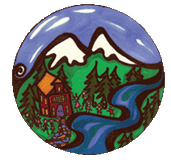The Celebration of Light
The Celebration of Light and World Holidays
Encouraging children to explore “light” and what it means to them…
Each year, as Montessori teachers, we have an opportunity to teach young children about holiday celebrations around the world. At the height of their sensorial exploration, Primary (3 to 6 year olds) students are ripe for cultural experiences. Introducing them to traditional dishes, dress, and decor allows the children internalize the experiences of others by experiencing it a little bit themselves.
We started with conversations about “light.” Where can we find light? How does it make us feel when it’s there and when it’s not there? How does it represent peace and understanding? We remembered that we sing songs about “light” through out the year (This Little Light of Mine, Light a Candle for Peace, etc.) and that we use lights to decorate during the winter (lights on our trees, lights on our house, lights in our windows, candles on our tables, etc.).
A wonderful and non-denominational way to introduce “celebrating light” to children is by bringing their attention to the changing of seasons and light as we head into winter in the Northern Hemisphere. The lack of light is something tangible that children can understand, and with anything we do in a Montessori classroom, we always want to start with something that is concrete. The Winter Solstice is a celebration that has been taking place for thousands of years, stemming from a time when people thought that the light was swallowed up by evil spirits and that it needed to be coaxed back to life through feasting and celebrating for weeks! One of our Kindergarten friends really enjoyed the idea of “partying for weeks" to bring back the light! One year at MMCH we made spiral Solstice Calendars with the children to count down to the solstice. We’ve also made small globes out of ice for us to place a small candle in and place outdoors when it gets dark, and popcorn and cranberry strands for our animal friends as they prepare for the long winter ahead.
Often in Montessori classrooms, we also include information about Hanukah, Kwanzaa, and Christmas, as they are some of the major holidays celebrated during the month of December. One day at MMCH we told the story of the birth of Jesus, another day we told the story of the Maccabees and the miracle of light, and on another we introduced the seven principles of Kwanzaa and made “family trees” as a way to celebrate our families. Through out the classroom, a child could find menorah polishing, Christmas tree decorating, and African flag making.
For us, the most important job we have as educators is to introduce children to people, thoughts, ideas, climates, and cultures that are similar and different from their own. The understanding that there are all kinds of “differences” out there in the world beyond what each child is used to creates an incredible foundation from which the child can build. A foundation to build their own thoughts, their own traditions, and their own ideas for the future. Start with something as concrete and tangible as “light” that binds us all together, and then go from there…

